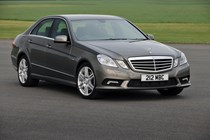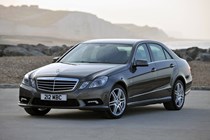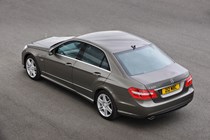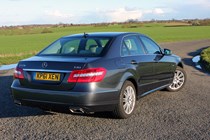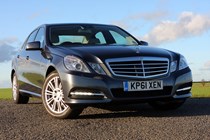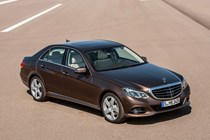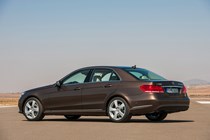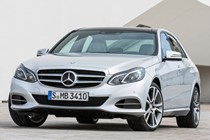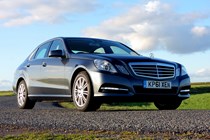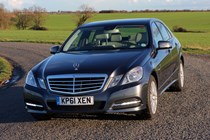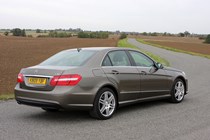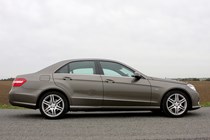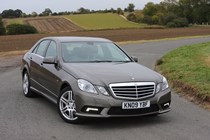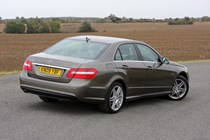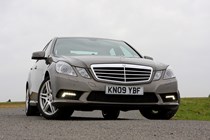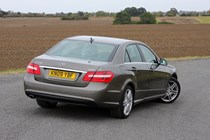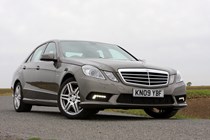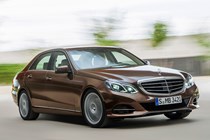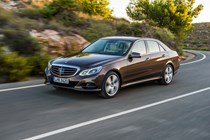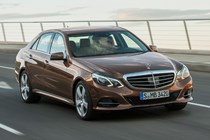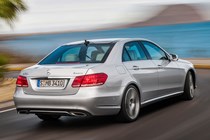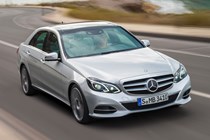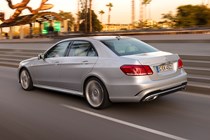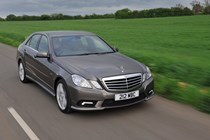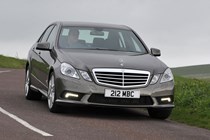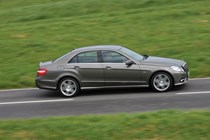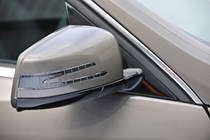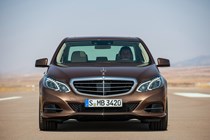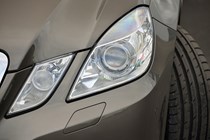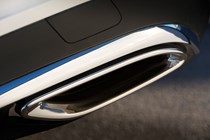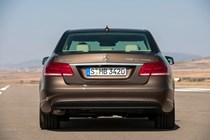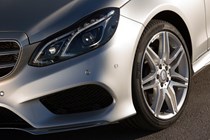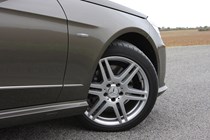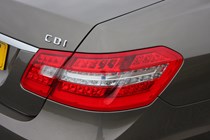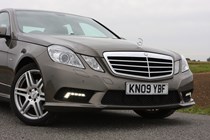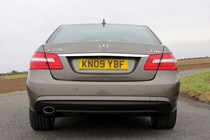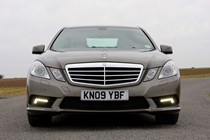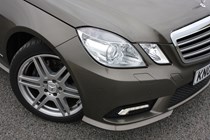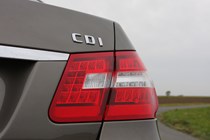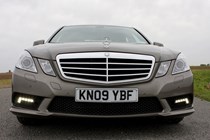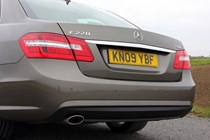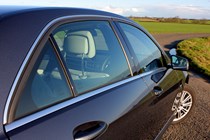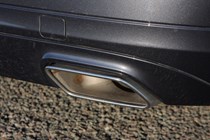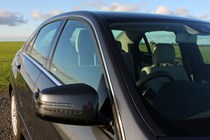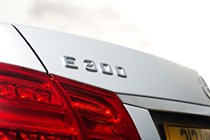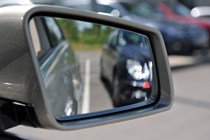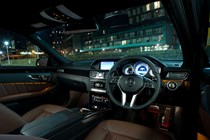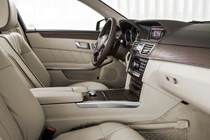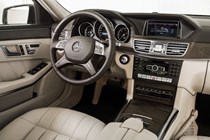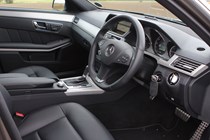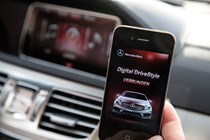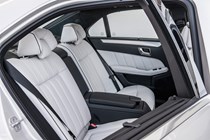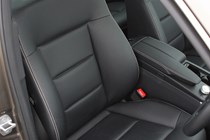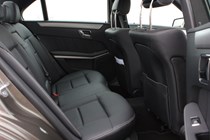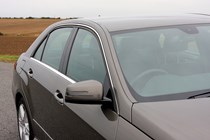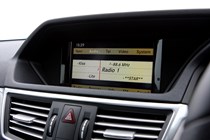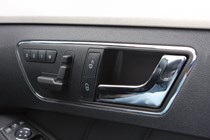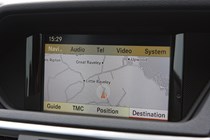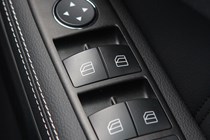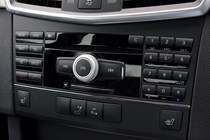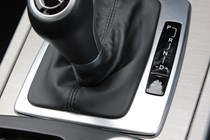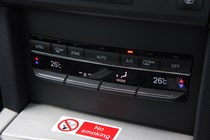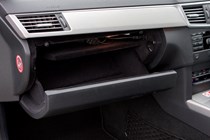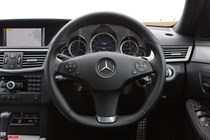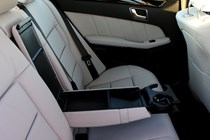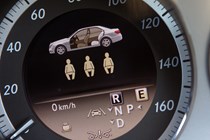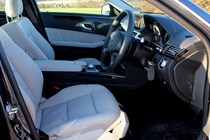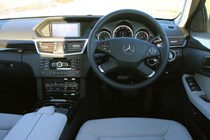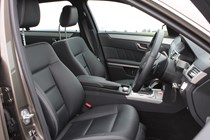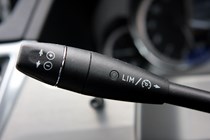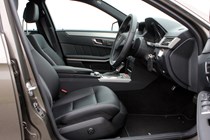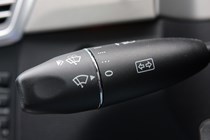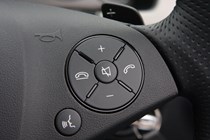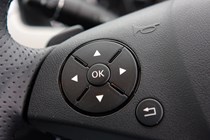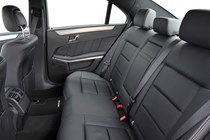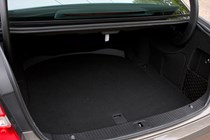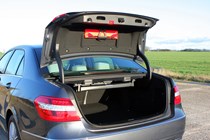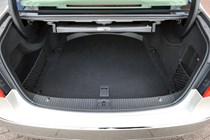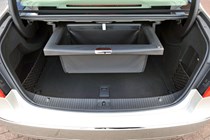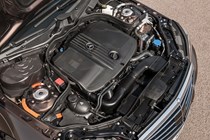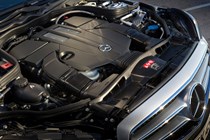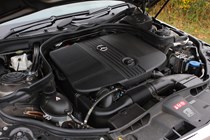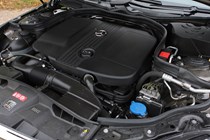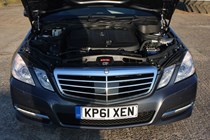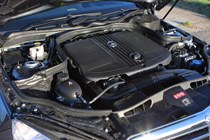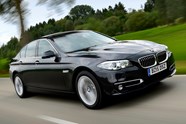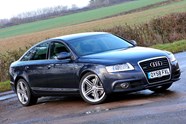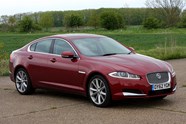
Mercedes-Benz E-Class Saloon (2009-2016) review
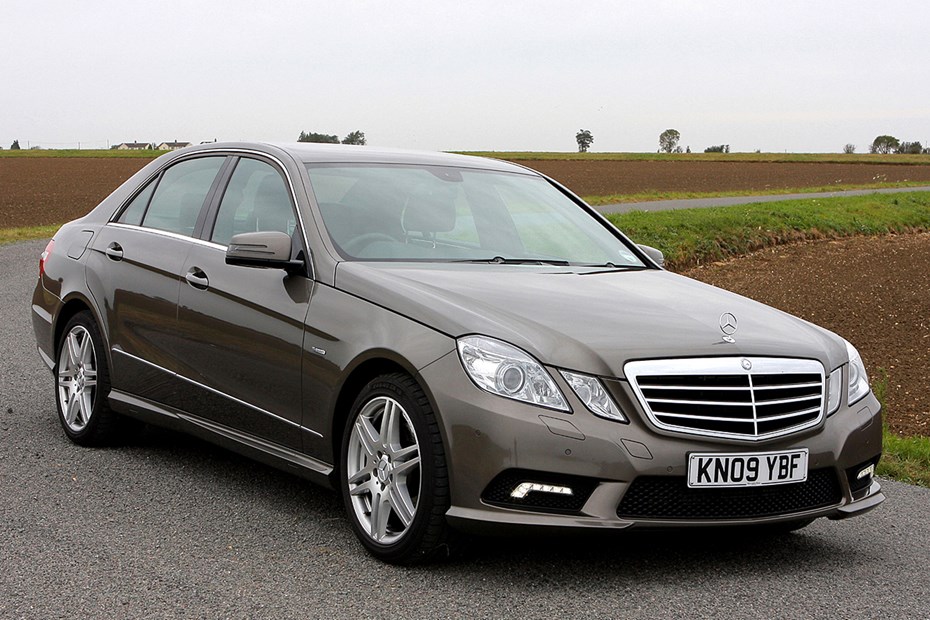
At a glance
| Price new | £28,805 - £50,250 |
|---|---|
| Used prices | £1,308 - £14,328 |
| Road tax cost | £20 - £760 |
| Insurance group | 29 - 44 |
Get an insurance quote with

|
|
| Fuel economy | Not tested to latest standards |
| Range | 454 - 950 miles |
| Number of doors | 4 |
| View full specs for a specific version | |
Available fuel types
Petrol
Diesel
Hybrid
Pros & cons
- Exceptional refinement
- Solid feel and roomy
- Tax-efficient diesels
- Excellent on the motorway
- Sharp styling
- Slightly noisy four-cylinder diesel
- Smaller petrol engine rather lacklustre
Mercedes-Benz E-Class Saloon (09-16) rivals
Overview
The fourth-generation Mercedes-Benz E-Class saloon, known to enthusiasts as the Mercedes E-Class W212, came as a bit of shock when first revealed. The angular headlights were a big departure from the rounded model that came before, but many buyers quickly came to love this more athletic elegance and were soon won over by its impressive blend of luxury and refinement, regardless.
Over time, the W212 E-Class has also proven to be a generally reliable machine, capable of high mileages if well looked after. There are a few things you need to look out for when buying a used E-Class, but that’s what we’re here to help with. Keep reading.
Mercedes E-Class W212 known faults and common problems
Made from 2009 until 2016, with a facelift arriving in the UK in 2013, there are plenty to choose from on the used market. You can buy one for under £5,000, but for that you’ll have to accept a scrappier example, perhaps with very high mileage (not necessarily a bad thing if the service history is complete). The most expensive models command three times that amount – still good value if you consider the original price and that these should be the among the last of this generation.
Rivals include the BMW 5 Series and Audi A6, but the E-Class is the classiest choice, and perhaps the German exec of the time with the best reliability reputation.
Buying guide
Common issues, and what to look for if you’re looking at getting one.
1) Water pumps
Quite a common failure point on the W212 E-Class. Fortunately, you should hear the problem coming. Make sure you check for unpleasant noises in this area on the test drive and regularly after any subsequent purchase.
2) Diesel engines
These have previous been well known for injector problems, but by this point this should have been rectified if the car is still with us. More pressing on a used model now are signs of coolant leaks – usually from around the cooler for the exhaust gas recirculation (EGR) valve and the water pump – and aging timing chains. Timing chains will not last the life of the car.
On early V6 diesels the oil cooler can also leak. This was solved by an updated seal design on later cars but is a real pain on earlier models as there’s a lot of labour involve getting to the issue to fix it. As with all modern diesels, the particulate filter will fail if the car is mostly used for short journeys; low mileage isn’t always a plus with one of these.
3) Electrical issues
These are potentially wide ranging, from minor sensor problems to reports of total ECU failures. Oxygen sensors and crank position sensors are the biggest culprits in the former category. Don’t leave either for too long.
4) Rust
Rust on the rear subframe and axle is a widely reported issue in climates that are cold or where the roads are commonly salted – so definitely get these areas checked before handing over large amounts of cash for any W212. More visible cosmetic corrosion issues aren’t unheard of, either, especially on cars built earlier in the product cycle, but extensive degradation could be a sign of accident repair or neglect.
5) 7G-Tronic automatic gearbox
These can be expensive and irritating to fix, so look for a car with service history that includes regular attention to the automatic transmission. Make sure there aren’t any weird noises on the test drive and that the gear shifts are smooth.
6) Engine mounts
A common failure point, but not a massively big deal if attended to in a reasonably time frame. Perhaps a point of negotiation before purchase.
7) Power steering leaks
Again, not a big deal, but check for signs of weeping power-steering fluid and that the steering wheel turns smoothly from lock to lock. Any vibration is a clue that all is not well here.
8) Air hoses and intake manifolds
As these age they can develop cracks, eventually causing the car to go into limp home mode. Not a major problem, more of a pain, so worth checking before buying and regularly afterwards.
9) Fuel leaks
If you can smell fuel outside of the car and you aren’t in a petrol station then there’s a good chance the E-Class you’re looking at is leaking the stuff (be suspicious of any suggestions to meet at a petrol station for a viewing for this reason). This can occur for quite a few different reasons, so you may want to get a professional diagnosis before proceeding with the sale.
10) Interior wear
The interiors of these don’t last as well as you might expect. Creaks and rattles are common, bad stitching isn’t unheard of, and the Artico man-made leather substitute fails with age as well. There’s not much you can do about this – nor the aging factory infotainment systems, which are massively out-classed by modern vehicles – so just make sure the price you’re paying reflects the condition of the car.
What models and trims can you buy?
Mainstays of the W212 Mercedes are the four-cylinder diesel engines, badged E220 CDI and E250 CDI. These can sound a bit coarse, especially with age, but they’re capable of great fuel economy and offer plenty of power. V6 diesels badged E350 were also offered, if you’re after greater performance and smoothness.
The small petrol engines are the weakest choice, while the bigger ones are thirsty. Particularly the stonking AMG performance variants, but these pay you back with a superb, continent crushing driving experience.
UK buyers got bespoke trim levels which came with plenty of standard equipment. SE, Sport, Executive, Avantgarde and are the most common, but there were also AMG Sport and various ‘Edition’ variants over time as well, plus a later AMG Night Edition.
Estate, coupe and convertible models were also sold, but this review concentrates on the E-Class saloon.
Over the next few pages, we’ll review each aspect of the fourth-generation Mercedes E-Class, taking into account its practicality, comfort, fuel economy and performance. If you’re short on time, you can also skip to our verdict page to see if we recommend the E-Class W212 as a good used car.



